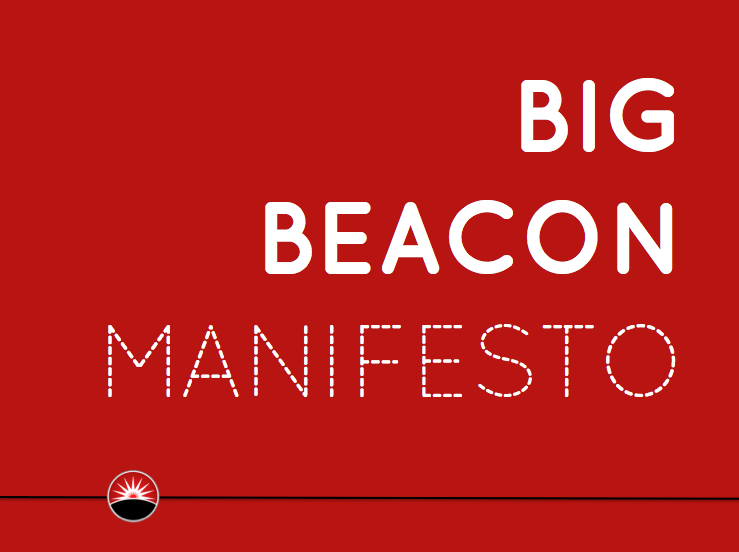
Big Beacon was a social movement to transform engineering and higher education in alignment with the creativity imperative of the 21st century.
Big Beacon had its roots in the work on engineering education transformation at the Illinois Foundry for Innovation in Engineering Education (ifoundry), Olin College, and the Olin-Illinois Partnership (OIP). Olin College was formed in 1999 as a “beacon” for engineering education, but as a small school with approximately 300 students and 30 faculty members, there have always been doubts about the practicality and effectiveness of the ideas and practices at Olin for mainstream engineering education. Starting in 2007, Olin and Illinois faculty worked together to understand the core principles of modern engineering ed transformation. Big Beacon articulated, advocated, and spread those ideas around the world.
The term “Big Beacon” was first used in 2011 in a vision powerpoint presentation that imagined a new kind of organization to help promote change. In 2012, the Big Beacon Manifesto was written and posted to the first website (www.bigbeacon.org), and other outreach efforts began that year. This effort was followed by the writing of the book A Whole New Engineer (ThreeJoy Associates, 2014), and the startup of Big Beacon. In 2014, the BB Media Network was created to bring together media partners and independent communicators, and in 2015, a new set of collaboration circles was initiated to encourage advocacy and transformation within educational institutions and among active students supporting change.
The usual approach to education reform is through modifications to content, curriculum, and pedagogy. These things are important artifacts of authentic change, but the core of real transformation is a shift from fear and obedience to trust and unleashing of the learner. At the level of individuals this shift is largely a shift from negative to positive emotion. At the level of educational institutions, this is a dramatic shift in culture. For these reasons, it’s not enough to specify “what” to change without specifying “how.” To that end, Big Beacon developed and spread practical technologies of trust and change.
